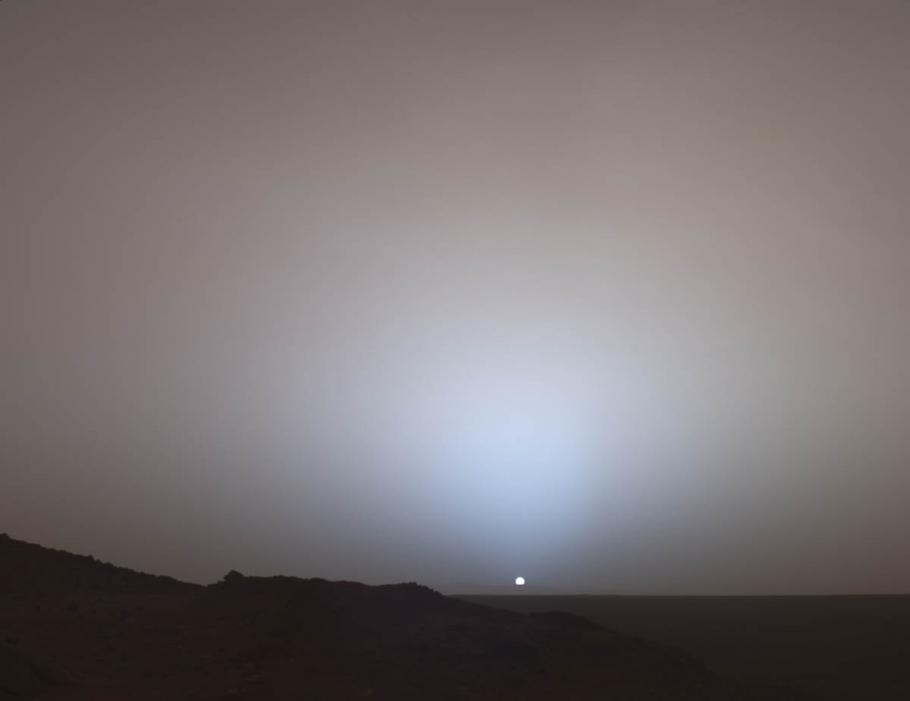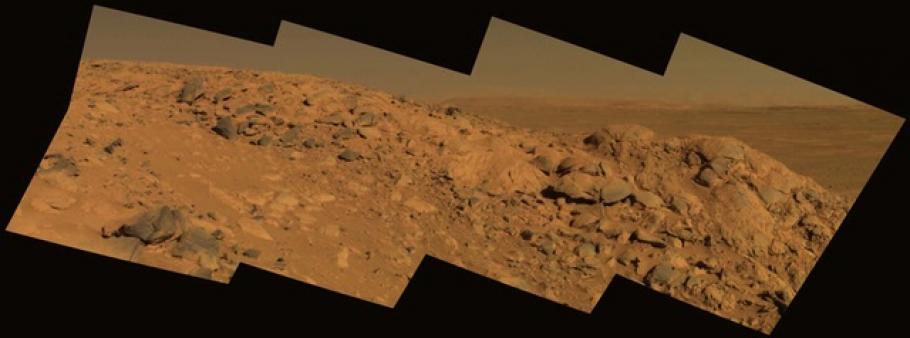For the last ten years while participating in the missions of the Mars Exploration Rovers, Spirit and Opportunity, I have watched in amazement as the beauty of Mars was revealed via images associated with discoveries made by the rovers. From stark alien landscapes, to others looking vaguely familiar, to gorgeous Martian sunsets, these images have often appeared to me to be both scientifically important and artistic.
Following that theme, I had the idea of displaying images from the rovers in an art gallery so as to highlight both their beauty and results from the mission. Over the past couple of years, and with the help of numerous members of the rover science team, an exhibition, called Spirit & Opportunity: 10 Years Roving Across Mars, was conceived and assembled in the Museum’s art gallery. The exhibit consists of around 50 images selected from the thousands taken by the rovers and follows them in approximate chronological order as they trundled across the surface of the Red Planet. There is also a full scale model of the rovers surrounded by panoramas that give the impression of standing on the surface of Mars. Finally, there are several hardware artifacts that include engineering models of the rover “guts,” a wheel, and calibration target for the cameras that includes a sundial.
The rovers were tasked with interpreting the role of water in shaping both landing sites, and a number of major discoveries were made by both rovers. In Gusev crater, Spirit documented craters and volcanic plains before reaching the nearby Columbia Hills and discovering ancient fumarole, or hot spring, deposits around a feature dubbed “Home Plate.” These deposits were initially discovered when a dragging, failed wheel on Spirit uncovered them from beneath a dusty surface cover. At Meridiani Planum, Opportunity discovered hematite concretions formed in ground water and dubbed "blueberries" by the science team, and ancient water-lain ripple marks that document past water at both the surface and in the ground. While locales explored by both rovers achieved the mission goal of understanding the role of water in shaping the landing sites, the water associated with ripples at the Meridiani landing site was relatively acidic as compared to fresh water in most lakes and rivers on the Earth. Nevertheless, had life been present, it may have been able to survive. Unlike Spirit, Opportunity landed very near to rocks that confirmed many of these discoveries, and the rover spent the ensuing years fleshing out the story of water in Meridiani that began in Eagle crater where the rover landed. These discoveries detail a long history of wind and water across the Meridiani plains.
The exhibit includes images related to these and other discoveries and gives the visitor the sense of what it would be like to participate in field work on Mars. However, instead of donning boots and tools and leaving behind footprints, the visitor can see where the rover imaged and ground into rocks, leaving behind tracks that tell a story of exploration and discovery. For more information about Spirit and Opportunity, watch this video of the Jan 7 panel discussion with Museum and NASA experts.




